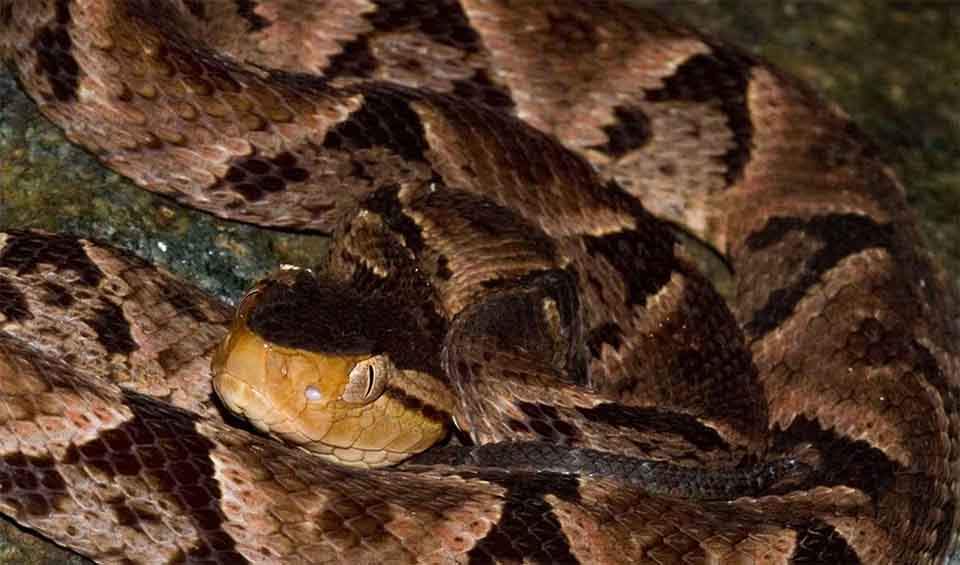This snake is famous for its potent venom and its role as a top predator in its environment. The terciopelo is a member of the Bothrops genus, which includes several species of highly venomous snakes. Among them, the terciopelo is particularly notable for its size, aggressiveness, and the serious medical impact of its bites.
One of the most distinctive features of the terciopelo is its appearance. It has a broad, triangular head that is wider than its neck, which is typical of vipers. The terciopelo’s body is muscular and covered in rough, keeled scales that give it a slightly rough texture. Its coloration is usually a mix of brown, gray, and olive, with darker patterns that form bands or diamonds along its back. These colors help it blend into the leaf litter and undergrowth of its forest habitat, making it hard to spot.
The terciopelo is also known for its powerful venom, which is considered one of the most dangerous in the Americas. The venom is hemotoxic, meaning it destroys blood cells and tissue, leading to severe pain, swelling, and potentially life-threatening complications if not treated quickly. Despite this, the terciopelo is not naturally aggressive and usually avoids humans when possible. However, it can be quick to defend itself if it feels threatened, and it is known to strike with little warning.
This snake is highly adaptable and can be found in a variety of habitats, including rainforests, plantations, and even near human settlements. Its adaptability, combined with its potent venom, makes it a significant concern for people living in areas where it is common. In many rural communities, the terciopelo is responsible for a large number of snakebite incidents, which can be serious or even fatal if not treated with antivenom.
Distribution
 Belize
Belize Colombia
Colombia Costa Rica
Costa Rica Ecuador
Ecuador Guatemala
Guatemala Honduras
Honduras Mexico
Mexico Nicaragua
Nicaragua Panama
Panama Peru
Peru Venezuela
VenezuelaAnything we've missed?
Help us improve this page by suggesting edits. Glory never dies!
Suggest an editGet to know me
Terrestrial / Aquatic
Altricial / Precocial
Polygamous / Monogamous
Dimorphic (size) / Monomorphic
Active: Diurnal / Nocturnal
Social behavior: Solitary / Pack / Herd
Diet: Carnivore / Herbivore / Omnivore / Piscivorous / Insectivore
Migratory: Yes / No
Domesticated: Yes / No
Dangerous: Yes / No




